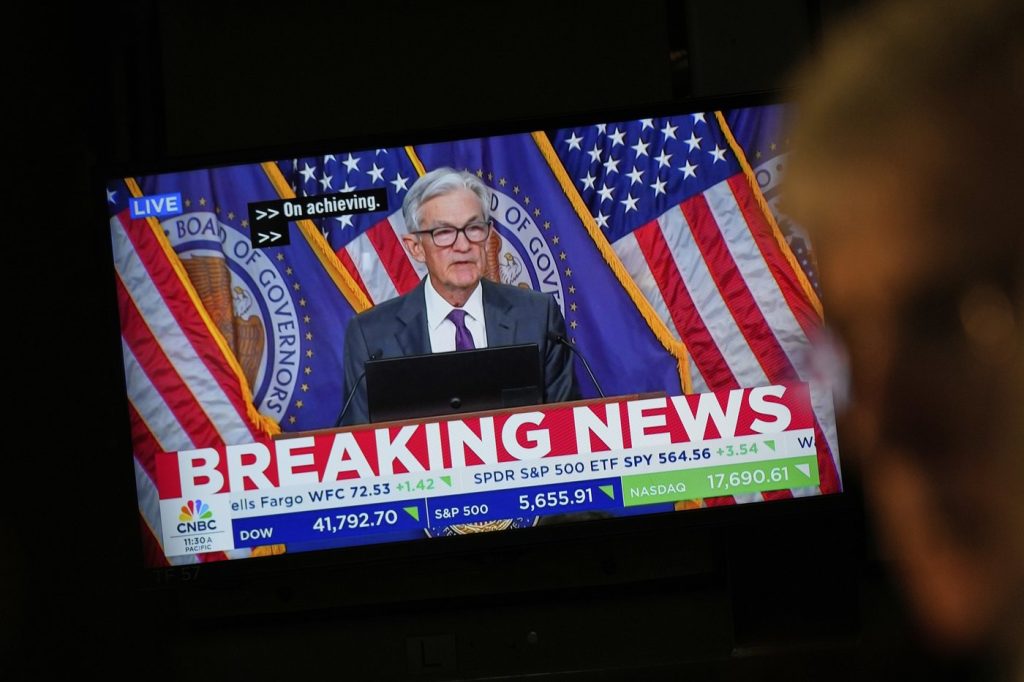BANGKOK (AP) — On Thursday, Asian shares mostly climbed following positive momentum on Wall Street, driven by the Federal Reserve's assessment that the economy remains healthy enough to maintain current interest rates. However, markets in Japan were closed for a holiday.
In Hong Kong, the Hang Seng index dropped by 1.3% to reach 24,454.47, while the Shanghai Composite index experienced a slight decline of 0.1%, landing at 3,424.16. South Korea's Kospi index, however, rose by 0.5% to 2,641.49, and Australia’s S&P/ASX 200 saw a notable increase of 1.2%, closing at 7,925.40. Taiwan's Taiex surged by 1.8%, while Thailand’s SET index in Bangkok edged up by 0.2%.
The momentum on Wall Street was further supported by easing yields in the bond market. When U.S. Treasurys offer lower returns, investors are often more inclined to invest in stocks, leading to a rise in stock prices. The S&P 500 climbed by 1.1% to 5,675.29, and the Dow Jones Industrial Average increased by 0.9% to 41,964.63, while the Nasdaq composite rose 1.4%, reaching 17,750.79.
This upward trend followed a period of volatility in the U.S. stock market, where investors were anxious about the economic impact of President Donald Trump’s policies aimed at reshaping the economy. Trump has echoed intentions to bring manufacturing jobs back to the U.S. and reduce the federal workforce significantly. This approach, however, has sparked uncertainty, leaving economists concerned about potential spending slowdowns from both businesses and households.
Federal Reserve Chair Jerome Powell acknowledged rising caution among U.S. consumers and corporations, reflecting a dip in confidence as indicated by various recent surveys. Despite these concerns, he highlighted positive economic indicators such as low unemployment rates. Powell remarked on the paradox wherein consumers may feel pessimistic yet continue to make significant purchases, like buying cars.
In response to economic conditions, Powell affirmed the Fed's current policy stance, suggesting it's prudent to wait for greater clarity concerning economic performance before making further adjustments. Earlier this year, the Fed decided to hold interest rates steady after having implemented significant cuts in the previous year. Lower interest rates generally stimulate the economy, but they can also contribute to rising inflation.
Fed officials have signaled several potential cuts to the federal funds rate by the year’s end, reflecting adjustments in their initial forecasts due to observed slower U.S. economic growth and higher inflation levels than previously anticipated. The overarching message from the Fed stresses the considerable uncertainty clouding economic projections.
Powell dismissed fears of "stagflation," a concerning scenario characterized by stagnant economic growth alongside persistent inflation rates, emphasizing that current conditions are not comparable to those faced in the 1970s.
In other financial developments, the yield on the 10-year Treasury bond fell to 4.24% from 4.31% just prior to the Fed's announcement. Additionally, the Fed indicated plans to reduce its monthly Treasury holdings starting in April, which should help in keeping long-term yields lower.
On Wall Street, Nvidia played a significant role in supporting market performance with a 1.8% rise, reducing its year-to-date losses to 12.5%. The company hosted an event showcasing its roadmap for growth amid speculation regarding the longevity of demand in the artificial intelligence sector, a sentiment backed by UBS analysts.
Tesla's shares also regained some footing, climbing 4.7% after enduring two consecutive days of losses that totaled roughly 5%. Nonetheless, it has suffered an aggregate decline of 41.6% in 2025 due to concerns regarding consumer sentiment related to CEO Elon Musk's attempts to cut government spending.
In the commodities market, U.S. benchmark crude oil saw an increase of 41 cents to $67.32 per barrel, while Brent crude, the international benchmark, rose by 43 cents to $71.21 per barrel. The U.S. dollar weakened slightly against the Japanese yen, moving down to 148.32 yen from 148.69, while the euro increased marginally to $1.0909 from $1.0905.
Contributors to this report included AP Business Writers Stan Choe and Matt Ott.










